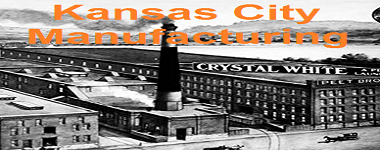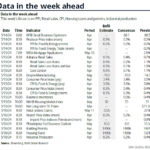

Of the five regional manufacturing surveys released for April, all are in expansion.
Analyst Opinion of Kansas City Fed Manufacturing
Kansas City Fed manufacturing has been one of the more stable districts and their index declined (similar to the other Fed districts). Key internals likewise were positive but declined.
There were no market expectations reported from Bloomberg – and the reported value was 7. Any value below zero is contraction.
z kansas_man.PNG
The Federal Reserve Bank of Kansas City released the April Manufacturing Survey today. According to Chad Wilkerson, vice president and economist at the Federal Reserve Bank of Kansas City, the survey revealed that Tenth District manufacturing activity expanded at a slower pace with solid expectations for future activity.
“We came down a bit from the rapid growth rate of the past two months,” said Wilkerson. “But firms still reported a good increase in activity and expected this to continue.”
TENTH DISTRICT MANUFACTURING SUMMARY
Tenth District manufacturing activity expanded at a somewhat slower pace in April, and expectations for future activity eased but remained at solid levels. Price indexes were mixed, but recorded little change overall. The month-over-month composite index was 7 in April, down from the very strong readings of 20 in March and 14 in February (Tables 1 & 2, Chart). The composite index is an average of the production, new orders, employment, supplier delivery time, and raw materials inventory indexes. Activity in both durable and nondurable goods plants eased slightly, particularly for metals, machinery, food, and plastic products.
Most month-over-month indexes expanded at a slower pace in April. The production, shipments, and new orders indexes fell but remained positive, and the employment index edged lower from 13 to 9. In contrast, the new orders for exports index increased from 2 to 4. Both inventory indexes fell moderately after rising the past two months.
Most year-over-year factory indexes recorded little change from the previous month’s readings. The composite yearover-year index was basically unchanged at 13, and the production, shipments, and order backlog indexes also remained stable. The employment index eased from 17 to 14, and the new orders index fell moderately. The capital expenditures index edged lower from 12 to 5, while the new orders for exports index posted its highest reading in over five years. The raw materials inventory index increased from 1 to 3, while the finished goods inventory index decreased. Expectations for future factory activity moderated slightly after posting historical highs last month.
The future composite index fell from 32 to 17, and the future production, shipments, new orders, and order backlog indexes also decreased somewhat from their high readings last month. The future employment index dropped from 43 to 26, and the future capital expenditures index also fell moderately. The future raw materials inventory index decreased from 8 to 4, while the future finished goods index increased modestly.
Price indexes were mixed in April. The month-over-month finished goods price index eased from 9 to 5, while the raw materials price index edged higher. The year-over-year finished goods price index inched up from 26 to 29, and the raw materials price index also increased mildly. The future raw materials price index fell from 59 to 45, and the future finished goods price index also eased slightly















